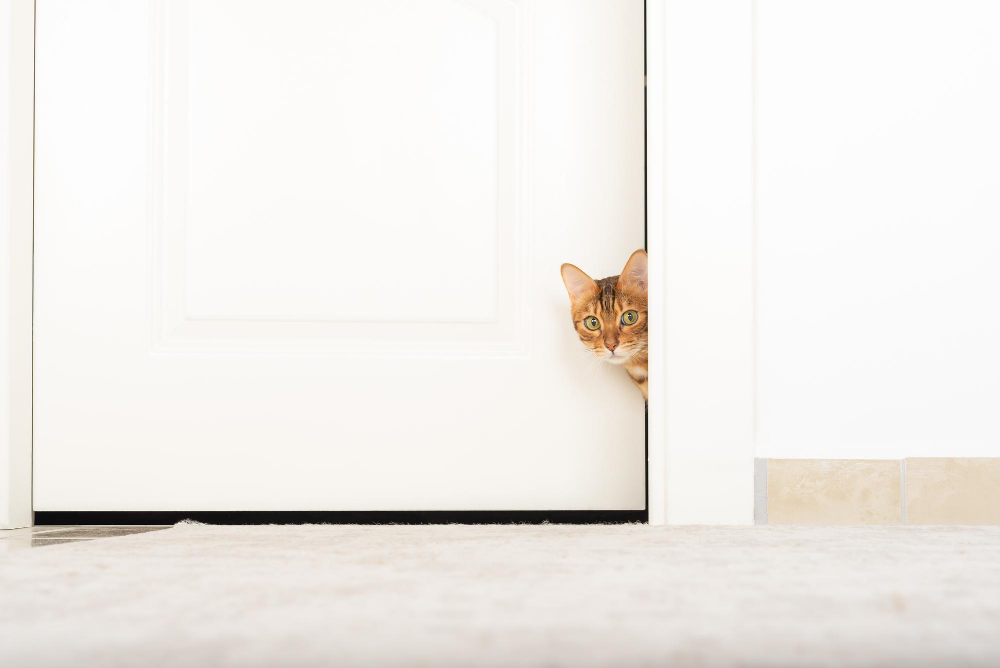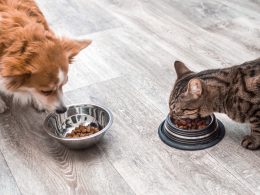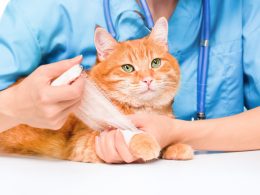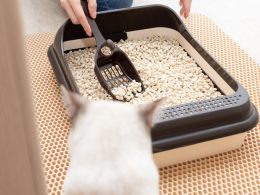If you’re a new cat owner, it may be nerve-wracking to allow your pet out of the house on its own. However, there are numerous advantages to allowing your cat to roam outside.
A cat flap may provide your cat with great stimulation and exercise and improve their overall health and well-being. Cat flaps have come a long way in the last several years, from simple door-mounted flaps to ones that use magnets, infrared keys, and unique chip codes.
Letting your furry cat roam free in the yard allows it to build a more expansive territory and engage in natural behaviors like clawing, sniffing, and spraying. They can also use their natural foraging and tracking tendencies by being outside, which may lead to fewer unpleasant rodents in the vicinity of your home.
A cat door can provide additional privacy and limited access for shy cats. Cats who like to explore the house on their own are better served by being them with their private cat door, which they may use to be unhindered by other animals.
Are Cat Flaps Necessary?
Pet owners who want to limit their pets’ access to inside and outside locations can benefit from cat doors. In addition, cat doors can help multi-animal families since they allow for more control or separation, as needed.
Your cat will be able to come and go as they choose if you have a cat flap fitted. However, the chance of your cat becoming caught outside when you aren’t looking is too great to risk letting him out of the house through a window or a doorway.
You can prevent an inquisitive dog from waking up your cat by installing a cat door. An escape route for cats can be found in small doors, preventing larger pets from entering.
In addition, cat doors might open up a whole new world of possibilities for your pet. For example, with a cat door, you may retain heat or air conditioning in your study or office while still allowing your cat to get in and out when you’re away.
While providing a new kitty with its place, a cat door also enables the feline the choice to gradually explore its surroundings. Cat aggression or other behavioral issues necessitate control of different places in the home, which is where cat flaps come in helpful.
What Can I Use Instead of a Cat Flap?
The one-way protection screws that come with LockLatch and the PetLatch can be used on any door or window. If you have a rudimentary understanding of do-it-yourself tasks, this can be done in less than 15 minutes and without causing any harm to the window or door in question.
No matter how hard you try, giving your cat more time in the great outdoors can have some advantages. These include helping them burn off excess energy, preventing boredom, and improving their overall health and well-being.
If you’re renting the house, you may not be able to install a cat flap because your landlord may not allow it. If you have ever decided to sell or rent out your property, you must include the cost of replacing the door if you’re the property owner.
As soon as you get the cat flap in place, it’s time to begin training your pet to use the new entry point. As creatures of habit, our pets may find it challenging to acquire a new skill, such as utilizing a cat flap if they also know how to go in or out of their home through an existing door or window.
How Do I Make a Homemade Cat Flap?
This DIY cat door is simple to construct, but it still looks beautiful. It has a black rim that looks great against the white door. So if you’re considering a straightforward way to get your cat out of the house, this cat door is the perfect solution.
- Cutting out the opening with a jigsaw is the first step. Because this is a hollow-core door, you may need to reinforce it after you finish.
- Due to the fact you had already cut some wood stock off the bottom of the door to match his jamb opening, he had the correct thickness. Therefore, glue and brads were used to attach that piece to the opening on the top and bottom.
- Using a different piece of scrap for each side, the door was hung in the opening until the job was complete.
- Consider adding a flap to hide the gap. Because acrylic is lightweight and transparent, you can use it for the flap. Swinging it both ways is made simple by a piece of piano hinge.
- Magnetic cabinet latch components are used to make a latch that keeps the flap from swaying in the wind at the last touch. Once the flap is in place, a daring kitten takes it for a spin.
How Do You Make a Cat Door Out of a Window?
Window sash cat doors are available in various styles and sizes and are custom-made to fit your window. They are, however, very pricey; you may not have seen any for less than $100. Nevertheless, adding a DIY cat door out of a window is an excellent way to give your pet the freedom to wander.
- The door can be removed
- On sawhorses, place the door
- Flaking paint should be sanded off
- Sand and repaint the door (if needed)
- Place the door frame in the desired location for the DIY cat door
- Prepare the window frame to be used as the smaller frame
- To begin your hole, drill into the marked square with a significant drill bit and trace inside the frame to obtain the smaller frame dimension
- Using your jigsaw, cut off the square from the center of the hole
- Remove any sharp edges with sandpaper
- On each side of the door, nail the frame that covers the cat door hole
- Sand any remaining edges
- Repaint any nicks in the woodwork and patch any holes














